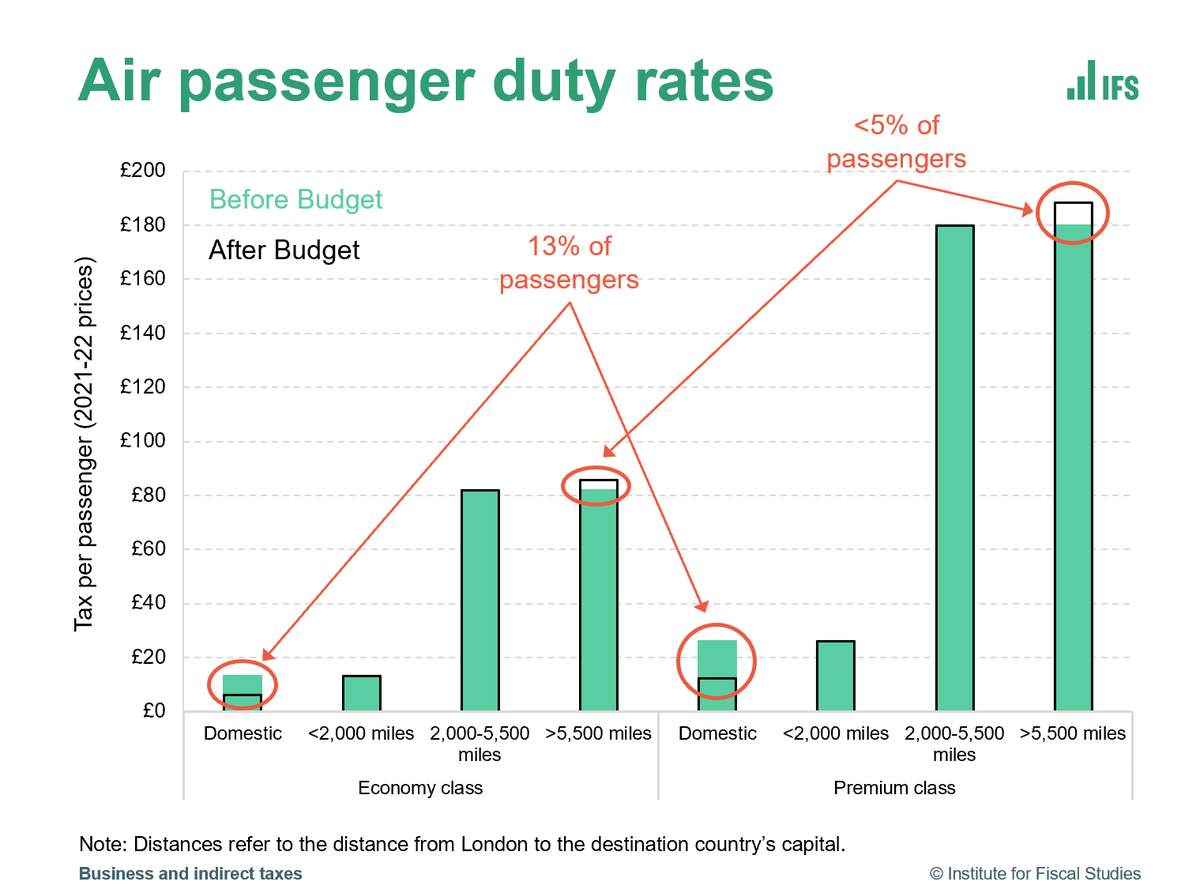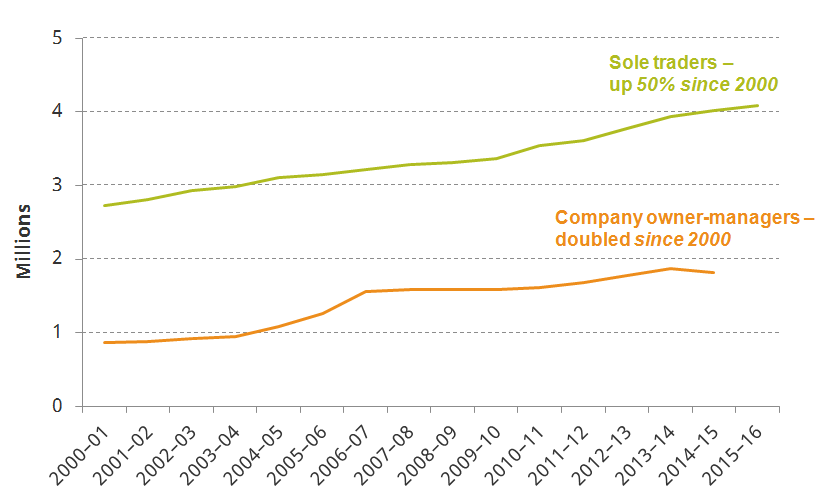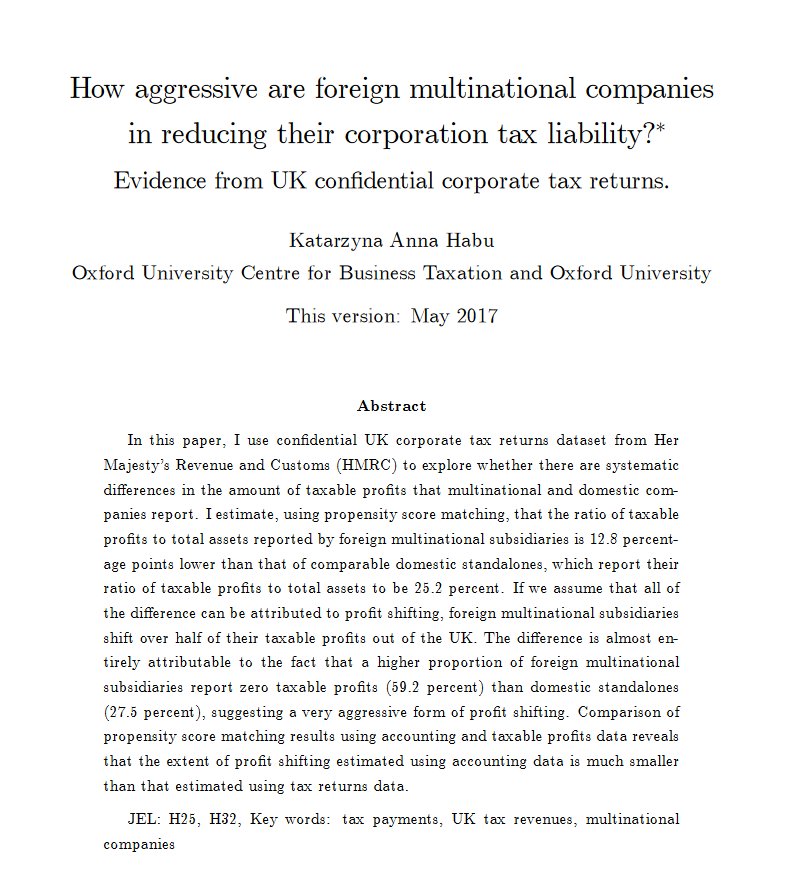
Air Passenger Duty changes will INCREASE FLYING….
OBR forecasts ~400k more flights per year.
But NOT UK EMISSIONS. Here’s why (reason is not obvious):
1/N
(from @StuartAdam_IFS
@TheIFS
presentation)
OBR forecasts ~400k more flights per year.
But NOT UK EMISSIONS. Here’s why (reason is not obvious):
1/N
(from @StuartAdam_IFS
@TheIFS
presentation)

Domestic flights are within UK Emissions Trading Scheme. This puts a cap on emissions from things covered. BROADLY, more emissions from domestic aviation -> more demand for permits -> higher ETS prices -> lower emissions elsewhere. Overall emissions within ETS unchanged. 2/n
At same time, higher APD on long haul will cut emissions.
(worth remembering that, thanks to VAT, business flights still subsidised. We showed that here: ifs.org.uk/publications/1…)
3/n
(worth remembering that, thanks to VAT, business flights still subsidised. We showed that here: ifs.org.uk/publications/1…)
3/n

Punchline: Another example of why it’s important to look at all policies together and not just on the direct effects of one.
End.
End.
• • •
Missing some Tweet in this thread? You can try to
force a refresh











